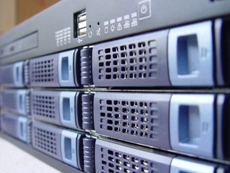The data storage industry is undergoing a wave of consolidation in early 2017, due in part to Hewlett Packard Enterprise (HPE).
In January, HPE snapped up SimpliVity, a storage company from Westborough, Mass. that specializes in converged infrastructures. Yesterday, HPE announced it is in the process of acquiring Nimble Storage, a provider of all-flash and hybrid-flash storNimble Storage's portfolio complements and strengthens our current 3PAR products in the high-growth flash storage market and will help us deliver on our vision of making Hybrid IT simple for our customers," remarked Meg Whitman, president and CEO of HPE, in a March 7 announcement.
Rohit Kshetrapal, CEO of Tegile, a fellow provider of all-flash and hybrid storage arrays, noted somewhat of a product overlap between 3PAR and Nimble.
"The most immediate impact of HPE’s acquisition of Nimble will be on the channel storage market," Kshetrapal told InfoStor. "Both Nimble and 3PAR product lines go after a similar set of customers and workloads, so HPE will need to draw a distinctive line between which technologies and products they embrace and also figure out how to bring them together effectively, as both have radically different functionality, operating environments and user experiences."
In the meantime, the industry should brace for some upheaval.
"Until this dilemma is solved – and it will take quite a bit of time – the lack of guidance for HPE and Nimble resellers will create confusion in the channel," continued Kshetrapal. "Events like these are an opportunity for companies that offer broader platforms to expand their customer base. We saw this when Dell and EMC merged, and although we’re only on day two, we’re already seeing it with Nimble and HPE."
Also see: DROBO 5C Review
It's also an opportunity for HPE's storage rivals. "The phones are ringing off the hook," Kshetrapal reported.
Patrick Rogers, vice president of marketing and product management at Cohesity, an enterprise data protection and management company, paints a bleak picture for vendors focused on traditional IT environments.
"Nimble's acceptance of HPE's buyout offer demonstrates that the climate is not hospitable for standalone on-premises storage providers. Anticipation that future growth will be challenging made the HPE buyout very attractive to Nimble's Board or Directors," said Rogers in an email statement sent to InfoStor.
Businesses are increasingly turning to flexible, cloud-enabled solutions for their enterprise storage needs. "Future storage market growth and customer attention will be directed towards software-defined, multi-cloud-capable architectures. Large enterprises in particular seek web-scale technologies to support their constantly growing data storage requirements spanning both private and public clouds," Rogers added.
Lenovo's Data Center Group, in light of its recent partnership to "transform the data center" with Nimble's help, released a statement assuring customers the acquisition will have little effect on its storage strategy.
"Lenovo announced the alliance with Nimble in October 2016 and the relationship was in its early stages. As such, there is virtually no impact on either our customers or product portfolio," asserted the company in an email to InfoStor.
"Going forward, we will expand our efforts to bring the compelling benefits of flash-based storage to our customers, both in traditional data center infrastructure and next-generation IT solutions. In fact, we plan to introduce new flash storage offerings later this year," Lenovo said.age systems, for $1 billion.
It's also an opportunity for HPE's storage rivals. "The phones are ringing off the hook," Kshetrapal reported.
Patrick Rogers, vice president of marketing and product management at Cohesity, an enterprise data protection and management company, paints a bleak picture for vendors focused on traditional IT environments.
"Nimble's acceptance of HPE's buyout offer demonstrates that the climate is not hospitable for standalone on-premises storage providers. Anticipation that future growth will be challenging made the HPE buyout very attractive to Nimble's Board or Directors," said Rogers in an email statement sent to InfoStor.
Businesses are increasingly turning to flexible, cloud-enabled solutions for their enterprise storage needs. "Future storage market growth and customer attention will be directed towards software-defined, multi-cloud-capable architectures. Large enterprises in particular seek web-scale technologies to support their constantly growing data storage requirements spanning both private and public clouds," Rogers added.
Lenovo's Data Center Group, in light of its recent partnership to "transform the data center" with Nimble's help, released a statement assuring customers the acquisition will have little effect on its storage strategy.
"Lenovo announced the alliance with Nimble in October 2016 and the relationship was in its early stages. As such, there is virtually no impact on either our customers or product portfolio," asserted the company in an email to InfoStor.
"Going forward, we will expand our efforts to bring the compelling benefits of flash-based storage to our customers, both in traditional data center infrastructure and next-generation IT solutions. In fact, we plan to introduce new flash storage offerings later this year," Lenovo said.age systems, for $1 billion.






